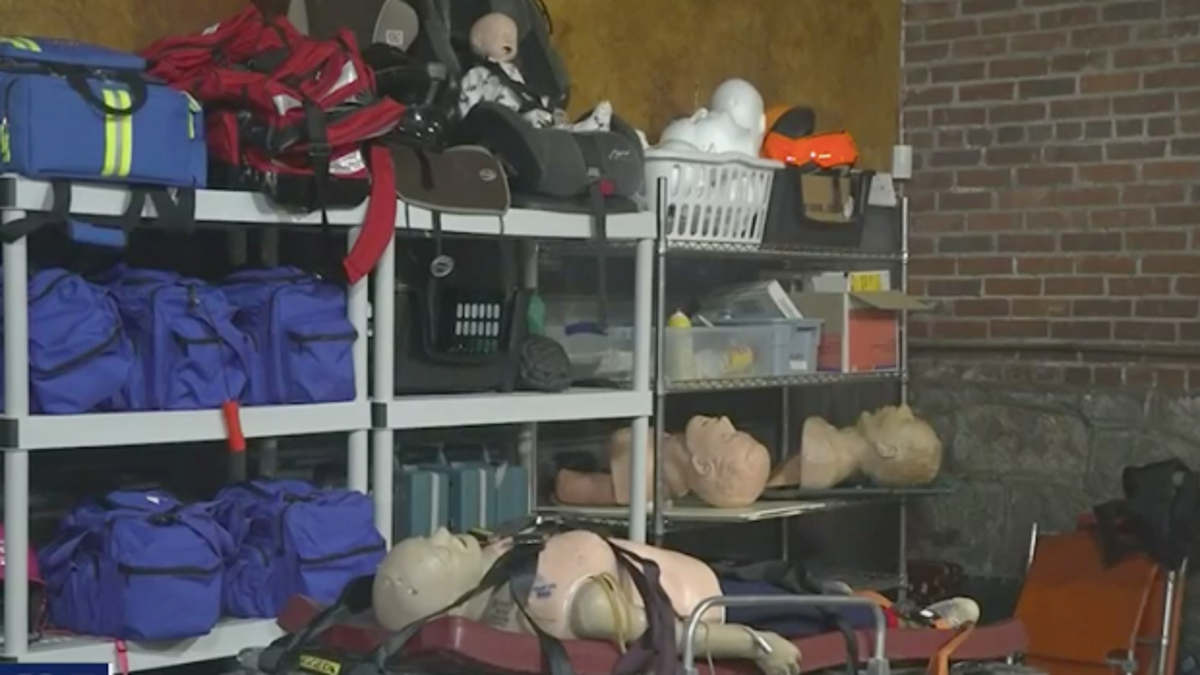Job hiring has never been this difficult: Doc's Smokehouse owner
Brent Brashier, Doc's Smokehouse owner, argues unemployment benefits are not helping 'folks in the restaurant business.'
Ambulance services are facing a nationwide labor shortage as the demand for EMS workers is higher than ever.
Hundreds of EMS positions are sitting empty and staffing shortages are increasing wait times for those who are need.

The Georgia Institute of EMS training facility for future EMS workers. (Jayla Whitfield/FNC)
Charles McFall has worked as a paramedic for more than 20 years and said the coronavirus pandemic hit the industry hard.
"When COVID hit, it really hit our staff," McFall said.
McFall works for Trinity EMS, which he says were forced to shut some trucks down and stop giving service because of the shortage.
"We’re struggling because we need to help more patients, provide more care, and it's hard to get the people to do that. If there’s not a truck on the street, there is no patient care," McFall said.

Charles McFall preparing to enter the Trinity EMS paramedic vehicle. (Jayla Whitfield/Fox News)
Thomas Kamplain, the director of the Georgia Institute of EMS, says the biggest contributing factors to the shortage is salary and training.
"The training requirements have been going up up up but the salary requirements have not been following," Kamplain said. "We’re seeing more students that are coming here to step-stone into other career fields versus coming in to stay in EMS"
According to the Bureau of Labor and Statistics the annual salary for paramedics and EMS workers was roughly $36,000 in 2020 after months of training. Currently, Kamplain trains students 70% online and only 30% in person.
However, if more EMS workers don’t get trained and hired, communities will suffer.
"The people who are not insured, the homeless individuals, people who are really economically impacted due to COVID," Kamplain said.
CDC: DELTA VARIANT ACCOUNTS FOR 83% OF US CASES
"And every second adds up into minutes, into hours, and the faster we can get to somebody and treat them the better it is," McFall said.
Donald Dereamus, a paramedic provider in Pennsylvania, said they have nearly 35% of unfilled shifts in his area.

Paramedic and EMS training supplies at the Georgia Institute of EMS. (Jayla Whitfield/Fox News)
"We’re really short staffed and I don’t know if any EMS service in this state has basically full staffing – urban or rural," Dereamus said.
Dereamus said the shortage has caused an access to care issue nationwide.
"We’ve actually seen people leave the field because of the fear of COVID and because of the workforce shortage across the country," Dereamus said.
To keep up with the demand paramedic services are leaving their primary coverage area to help those in need.
"There’s been instances in Pennsylvania where ambulances responded from one or two counties away to take up calls in a rural environment," Dereamus said.
While EMS services are working to meet the demand, communities are expecting paramedics to show up for every single call.
"The first three digits you dial is 911 – you rely on that person. You expect someone to show up, it doesn’t cross your mind that somebody isn’t going to show – and if this shortage keeps happening nobody is going to show or its going to be a long time," Dereamus said.


